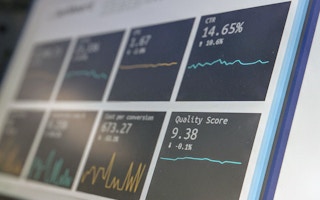Data allows cities to track their progress, highlight areas for improvement, and set ambitious targets for the future, said panellists at the 2018 Asia-Pacific Carbon Forum in Singapore last week.
To continue reading, subscribe to Eco‑Business.
There's something for everyone. We offer a range of subscription plans.
- Access our stories and receive our Insights Weekly newsletter with the free EB Member plan.
- Unlock unlimited access to our content and archive with EB Circle.
- Publish your content with EB Premium.
But does more data always mean more progress, or should policymakers discern between good and bad data, asked Assaad Razzouk, chief executive officer of renewable energy company Sindicatum Sustainable Resources.
“The International Energy Agency’s (IEA) Sustainable Development Scenario (SDS) exhausts the 1.5-degree carbon budget by 2023. What kind of a scenario does not even take the Paris Agreement into account?” he said, referring to IEA’s most ambitious global energy transformation scenario, released in its 2017 World Energy Outlook publication.
However, a study by Oil Change International and Institute for Energy Economics and Financial Analysis suggests that the SDS predicts a future in which oil and gas remain a major source of energy, and that the world fails to meet the targets set out by the Paris Agreement to keep the global temperature rise to under 2 degrees.
“Governments assume that these numbers are authoritative, and start building policies based on them. The problem comes when these numbers are wrong,” said Razzouk. “We can’t look at these numbers, this is dangerous data.”
“
We have to be very careful with data. We have huge amounts of data and if we keep collecting, it will just be death by data. We have to stop that, it is really diverting us from what we should be doing.
Assaad Razzouk, Group chief executive, Sindicatum Sustainable Resources
He said that “bad data” from the IEA has deterred government and investors from supporting renewable energy, holding back an even faster energy transition.
“In 2016, IEA forecasted that solar photovoltaics was going to increase by 50 gigawatts per year, each year until 2040. But in 2017 alone, we added 100 gigawatts,” Razzouk explained before the 40-strong audience at the forum.
The Paris-based autonomous IEA is a major source of data for the global energy market, but has met criticism in recent years for underplaying the role of renewable energy technologies in favour of fossil fuels.
The forum was part of the Asia-Pacific Climate Week, a series of events organised by the United Nations Framework Convention on Climate Change (UNFCCC) under the Nairobi-Framework Partnership.
Death by data, or progress with data?
The excessive focus on collecting data is “pushing us backwards, not forwards” by delaying action to solve the actual problem, said Razzouk. “We have huge amounts of data and if we keep collecting, it will just be death by data. We have to stop that, it is really diverting us from what we should be doing.”
He pointed out that the need to keep collecting and analysing data has delayed the advancement of cities, and cited the prolonged transition to electric cars in Delhi as an example.
However, Stefanos Fotiou, director for environment and development of United Nations Economic and Social Commission for Asia and the Pacific (UNESCAP), refuted the distinction between good and bad data. “Data is indisputable. I will insist that we need more data for without it, we cannot track the progress of cities and see which areas we need to improve,” he said in response to Razzouk’s comments.
For instance, IEA’s 2017 SDS forecast predicts that by 2050, 21 per cent of the energy demand will be for cooling. Since a significant proportion of this demand will be from the huge growth in Southeast Asian cities, these cities can take measures to reduce their climate impact and avoid such a scenario.
“Data allows us to identify the gaps that we have in this region, and see what is and isn’t working. Visit any shopping mall in Thailand, Manila or Jakarta and you will see that the temperature set in these malls are for polar bears, ” he said.
Responding to Fotiou’s comment, Razzouk said that the accumulation of even more data is redirecting efforts away from solving the root of the problem—climate change. Furthermore, data highlighting energy consumption in Southeast Asia turns the region into a lightning rod for criticism over its energy management policies despite similar practices around the world, he added, warning that this could have the opposite effect.
Razzouk said: “We cannot stop [Southeast Asia] from having air conditioning in their malls. This is exactly how you antagonise people into not taking action, especially when they know that everybody else is cooling themselves.”
Asked how the 96-member C40 chooses what data to use, Simon Hansen, director of regions, C40 Cities Climate Leadership Group said that the organisation does not make a distinction between good and bad data. “This [distinction] is a little dangerous to do. It suggests that there are certain truths that we find unhelpful, and we simply ignore them,” he said.
Instead, he called for action-oriented data collection that starts with problem-identification in cities. “We should ask where the problems lie, then question if there is any data available to us or data that we can generate so that we can act on this problem,” said Hansen.
Agreeing, Razzouk concluded: “We must prioritise action, and start with common sense.”








